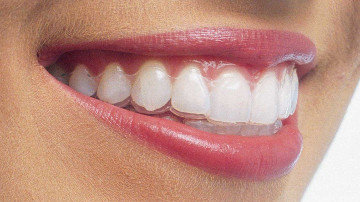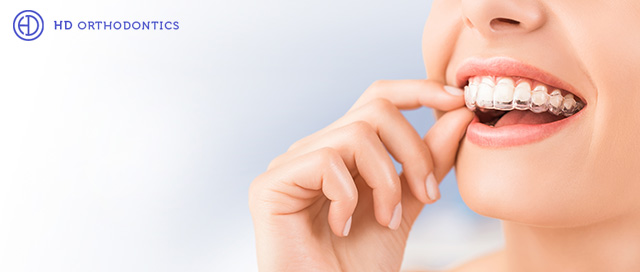The Price of Invisalign: Understanding the Investment in Your Smile
The Price of Invisalign: Understanding the Investment in Your Smile
Blog Article
Invisalign vs. Typical Dental braces: Which Choice Is Right for You?
When considering orthodontic therapy, the selection in between Invisalign and conventional dental braces presents a number of vital variables that merit mindful evaluation. Invisalign offers a discreet alternative with removable aligners, while traditional braces supply a more visible yet reliable remedy for severe imbalance. Each alternative includes distinctive benefits and downsides connected to aesthetics, convenience, treatment period, and cost. Recognizing these nuances is essential for making an educated decision that lines up with your personal preferences and lifestyle. The inquiry continues to be: which option will finest fulfill your orthodontic requirements and expectations?
Overview of Therapy Options

On the other hand, typical braces contain steel braces and cables that are adhered to the teeth. This technique applies continual pressure with time to achieve placement. While efficient for intricate orthodontic problems, typical dental braces call for regular gos to for modifications and can position difficulties in preserving oral health as a result of the trouble of cleaning around braces and wires.
Both alternatives have their merits, and the option typically rests on details oral problems, lifestyle preferences, and client conformity. Ultimately, getting in touch with an orthodontic specialist is important for determining one of the most ideal treatment strategy tailored to specific needs. Understanding the subtleties of each option can significantly affect the general success of orthodontic treatment.
Visual Factors To Consider
A substantial factor influencing the option in between Invisalign and traditional braces is the visual appeal each therapy provides. Invisalign aligners are crafted from clear plastic, making them practically undetectable when put on. This discreet appearance is especially interesting adults and teenagers who might really feel awkward regarding their orthodontic treatment. The ability to keep an all-natural smile throughout the placement process can dramatically improve the client's self-confidence in social and professional setups.
On the other hand, standard dental braces include metal braces and cables, which can be much more noticeable. While innovations in orthodontic technology have brought about the advancement of smaller sized brackets and colored elastics, conventional dental braces still keep an even more noticeable account. For some people, the visibility of dental braces may deter them from looking for essential therapy.
Inevitably, the selection in between Invisalign and traditional braces may depend upon individual preferences relating to appearances. Patients that prioritize discretion frequently lean toward Invisalign, while those that are less worried regarding visibility might choose standard dental braces. Recognizing the aesthetic effects of each choice is crucial for making a notified choice that aligns with one's lifestyle and choices.
Comfort and Convenience

In terms of benefit, Invisalign aligners are detachable, enabling patients to enjoy their favorite foods without limitation and keep optimum oral health. Cleaning and flossing are streamlined, as the aligners can be secured throughout these routines, whereas traditional dental braces need careful maneuvering around wires and braces.
In comparison, important site typical braces demand normal adjustments, making them much less practical for those with hectic routines. In general, the comfort and ease of Invisalign make it an appealing choice visit the site for many individuals seeking orthodontic therapy.
Treatment Period and Performance
While both Invisalign and typical dental braces work in dealing with dental imbalances, the duration of treatment can vary considerably in between the two alternatives. Normally, Invisalign therapy can take anywhere from 12 to 18 months, depending on the intricacy of the case. The clear aligners function by gradually moving teeth into their wanted placements, and normal follow-ups with an orthodontist help guarantee development remains on course.
In comparison, conventional dental braces often call for a longer dedication, usually varying from 18 months to 3 years. This is due to their set nature and the use of braces and wires, which can be a lot more reliable for serious imbalances and complicated instances (Invisalign). The therapy efficiency of traditional dental braces is well-documented, as they allow for specific adjustments and higher control over tooth motion
Ultimately, the selection between Invisalign and conventional braces might rest on both the awaited therapy period and the details dental problems available. Consulting with an orthodontist is crucial, as they can provide customized recommendations based upon individual demands, guaranteeing the chosen technique aligns with desired end results and durations.
Price Comparison and Insurance Policy Alternatives
Expense plays a substantial duty in the decision-making process for people considering orthodontic treatment, whether selecting Invisalign or conventional braces. Typically, the expense of Invisalign ranges from $3,000 to $8,000, while traditional dental braces generally set you back between $2,000 and $6,000. Variables influencing these expenses consist of the intricacy of the case, the period of therapy, and geographical location.
Insurance policy insurance coverage can substantially impact out-of-pocket costs. Several dental insurance strategies offer partial coverage for orthodontic treatments, but the specifics can vary commonly. It is critical for clients to examine their insurance plan to determine the degree of protection go to my blog for either option. Generally, conventional dental braces might be a lot more regularly covered by insurance coverage strategies compared to Invisalign, which some insurers classify as an aesthetic treatment.
In addition, a number of orthodontic methods supply adaptable repayment strategies, making both therapy options much more easily accessible. Patients ought to make inquiries regarding possible financing options and discounts for in advance repayments. Evaluating the overall price, consisting of insurance policy benefits and payment strategies, is important for making an educated decision that aligns with both aesthetic choices and budget factors to consider.

Conclusion
In summary, the selection between Invisalign and typical braces pivots on numerous aspects, including aesthetic preferences, convenience, therapy period, and price. Invisalign offers a discreet, removable choice that helps with dental hygiene and dietary versatility, while traditional dental braces may be preferable for complex dental issues and often come with a lower rate factor. Inevitably, consultation with an orthodontist is vital to evaluate specific circumstances and determine the most suitable therapy option for attaining ideal dental positioning.
When thinking about orthodontic treatment, the choice in between Invisalign and traditional dental braces presents several essential elements that merit careful assessment.Contrasting Invisalign and standard dental braces exposes distinctive treatment alternatives for orthodontic modification.While both Invisalign and standard braces are effective in correcting dental imbalances, the duration of treatment can differ significantly in between the two options.Price plays a considerable duty in the decision-making procedure for people thinking about orthodontic treatment, whether deciding for Invisalign or standard dental braces.In recap, the selection in between Invisalign and traditional dental braces pivots on multiple variables, including visual choices, comfort, treatment period, and cost.
Report this page